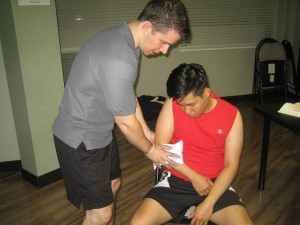Fact Checked
First Aid Kit
- Make certain that your family has first aid gear and kits.
- Make sure that everyone in your family knows where the first aid kit is, and that it can be accessed without difficulty.
- Regularly examine your kit and check the contents inside. Make certain the equipment is customized to your family’s precise needs.
- Make certain supplies are visibly labeled so getting them will be simple. Easy access to medical supplies eliminates misunderstanding and confusion during a crisis when these supplies are needed instantly.
Children
- Store your first aid kit and make it available to those who might need access to it, but store it away from kids.
In the occurrence that you have to assist a casualty, protect yourself in advance. Examine the scene prior to giving any first aid - If you decide to lock it, make sure that those who might need it know where the key is.
- Make certain the key is in a nearby spot.
- When storing your first kit away from kids, also keep household chemicals and medication safely stored away which are also unsafe for children.
- Throw away medications in the correct manner that reduces the chances of kids getting access to them.
Safety
- In the occurrence that you have to assist a casualty, protect yourself in advance.
- Examine the scene prior to giving any first aid.
- Look for hazards that could possibly make the situation worse
- Decide on possible ways to avoid hazards while giving first aid.
- When examining the scene, see if there are any other individuals available who can offer help, like phoning the ambulance while you give treatment.
- Wear gloves when possible to guard yourself from bodily liquids.
Medical Identification
- Before offering aid, always examine the casualty for a medical ID. This could be a bangle or a necklace similar to dog tags. Possible health issues are listed on these tags.
- They also display diseases or allergies the casualty might have. These things can assist you to determine the correct course of treatment, and assist you to provide essential information to emergency responders if the casualty is unconscious.

